It’s during late October and early November that I try to squeeze in an autumn woodland shoot. For my style of photography I find this time to be the best as it usually coincides with more gaps in the trees and more leaf litter on the woodland floor. This particular woodland in West Yorkshire is one that I have visited once before – back in the days of film! When visiting a relatively new location I find that it pays to keep an open mind and not be too rigid in your picture-taking.
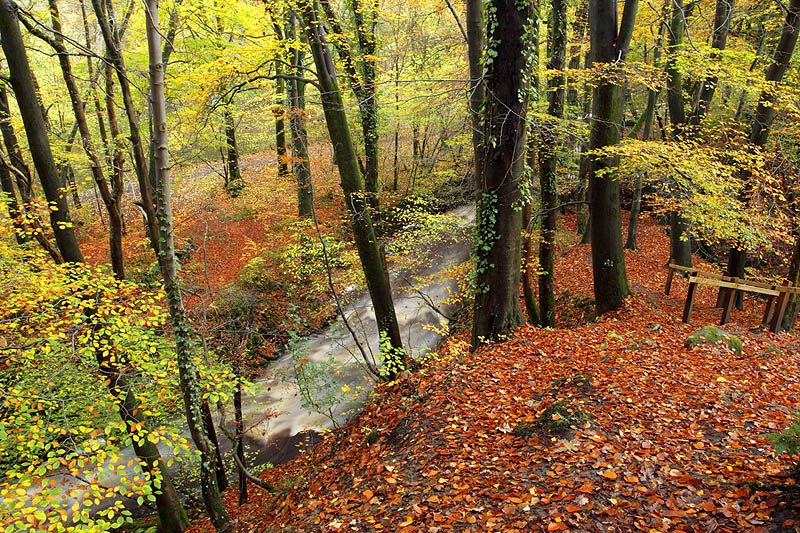
The majority of the afternoon consisted of overcast conditions which suited me fine – it made things much simpler and I could record wide scenes without too much contrast.
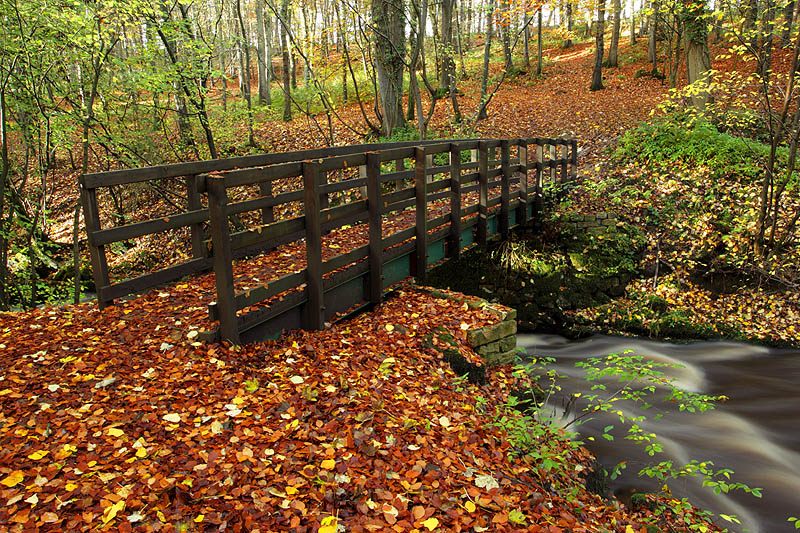
The low light inevitably meant slow shutter speeds and this was perfect for creating movement in the water. I personally love the effect of these long shutter speeds.
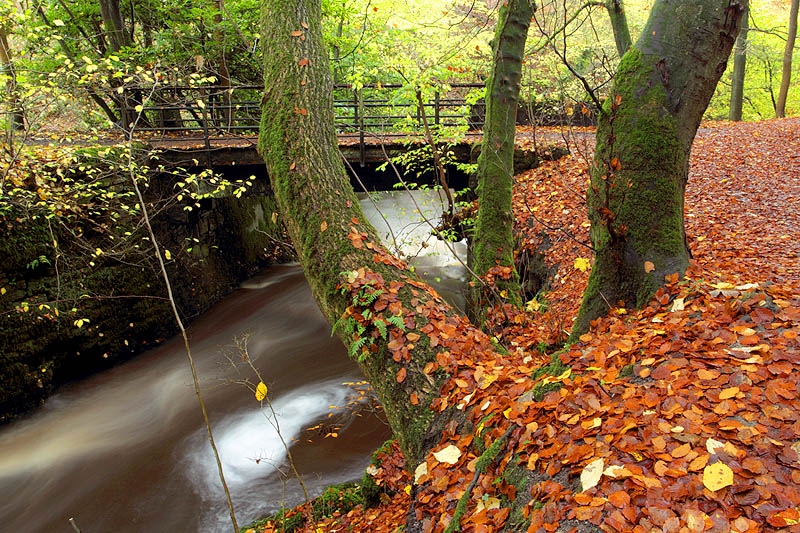
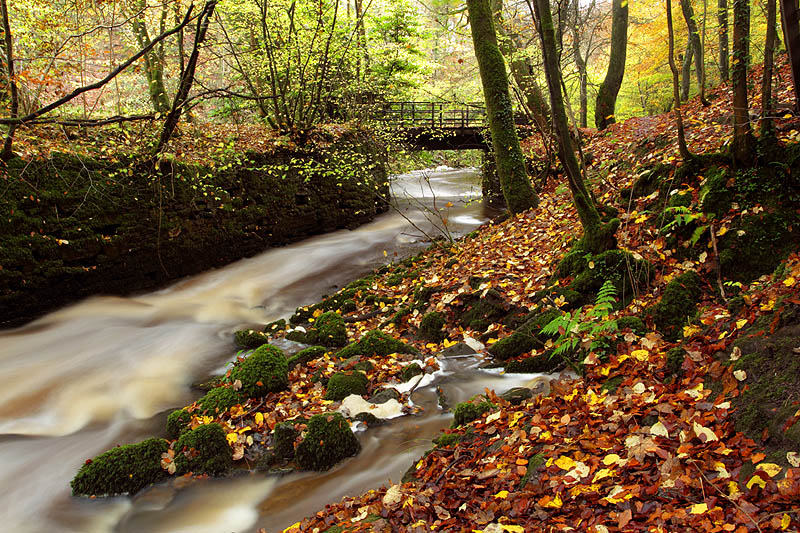
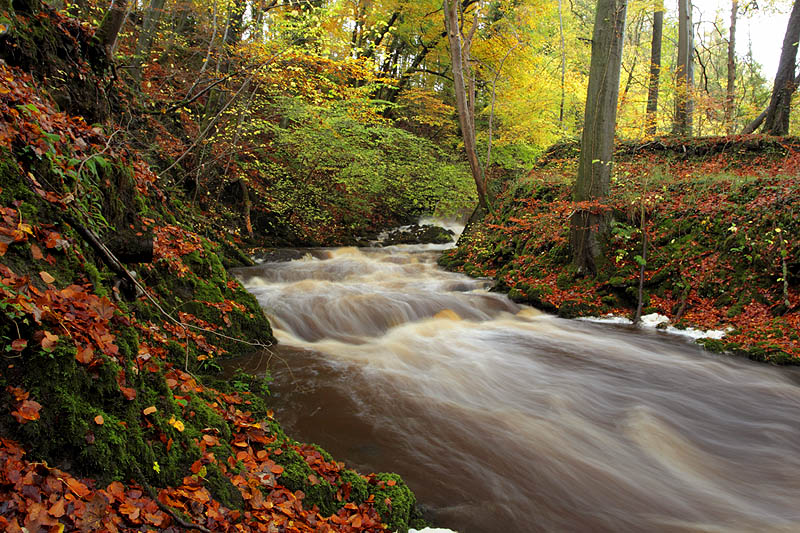
For all the images I used a polarising filter. The effect can be surprisingly striking: even in heavily overcast conditions a quick twist of the filter and the colours really leap out – with both greens and oranges becoming equally vibrant.
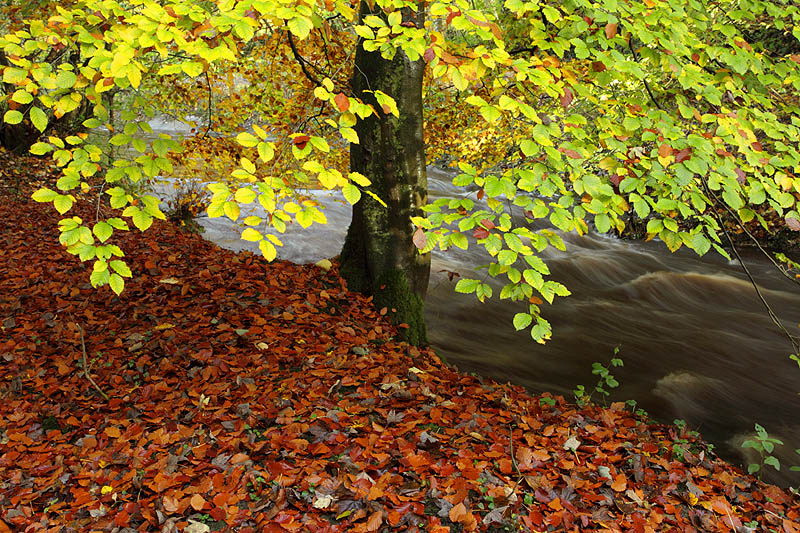
This was particularly true when photographing this magnificent beech tree by the water’s edge. I kept checking the effect of the filter, rotating it a few times to make sure it was having maximum effect. Exposure wise, the meter was fairly accurate. If anything I underexposed slightly for some shots.
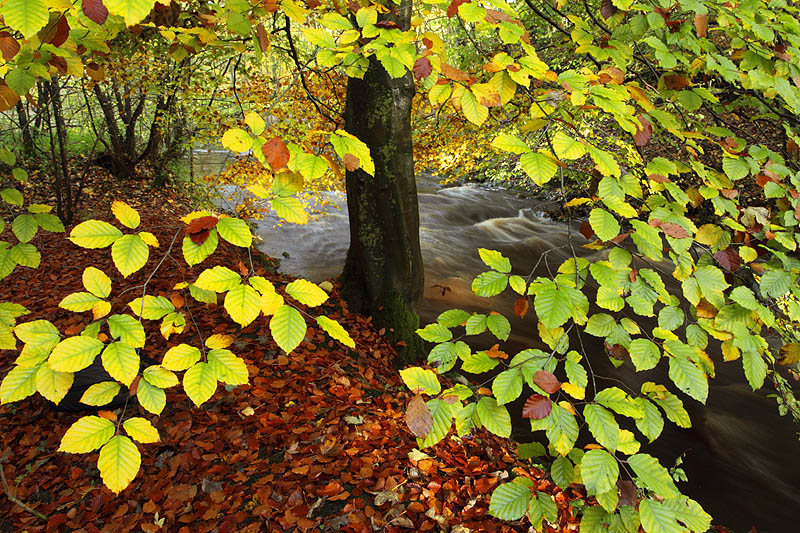
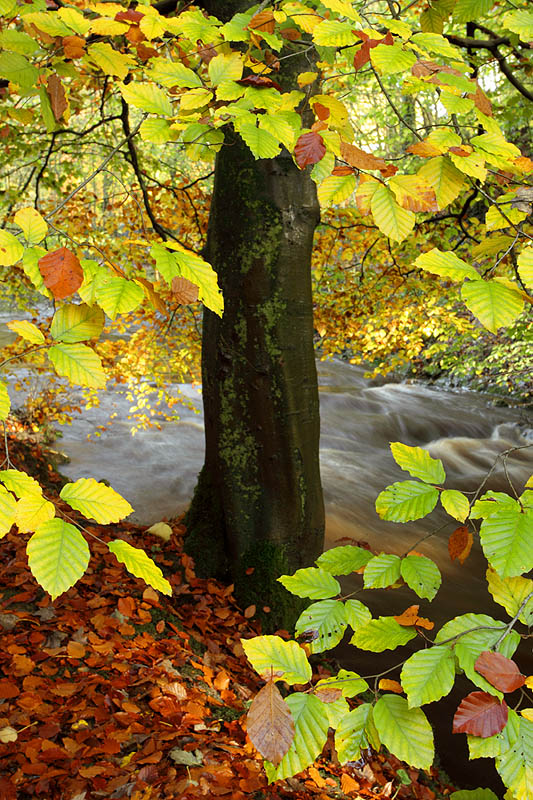
As a professional photographer I often have specific markets in mind and whilst this is generally a good thing, it can stifle creativity. When I finally checked on the time I realised I’d been in the wood for nearly 2 hours. My first thought was how quickly the time had flown, but then something else gradually dawned on me. In all that time – I hadn’t really thought about the picture-taking. Sure, I’d considered the composition and all the technicalities of maximising sharpness and depth of field, but in all that time I hadn’t consciously thought about what I was photographing or why. Everything I had been doing was simply guided by instinct; intuition. All those little tweaks of position, angle; the play of light – they were all done with feel – as I strived to create something that satisfied me, and nobody else. There’s no doubt in my mind that this is when we achieve our most rewarding images.
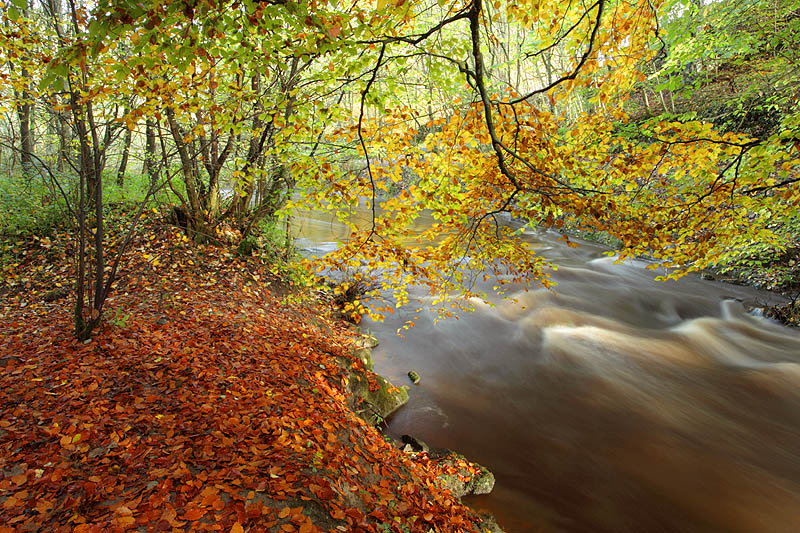
Now that I felt I was getting ‘under the skin’ of this special place I turned my attention towards the water and let my instincts work on creating more abstract images.
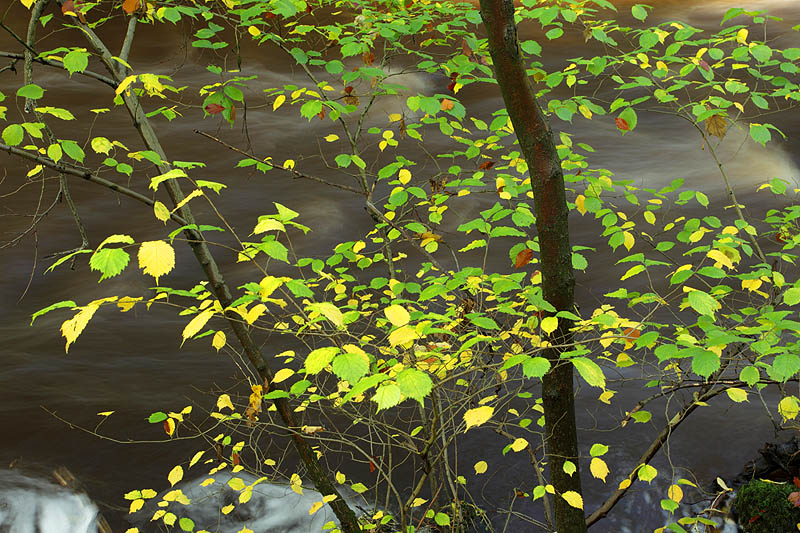
The leaf colour by the water was stunning and I worked on some closer images using this clean backdrop.
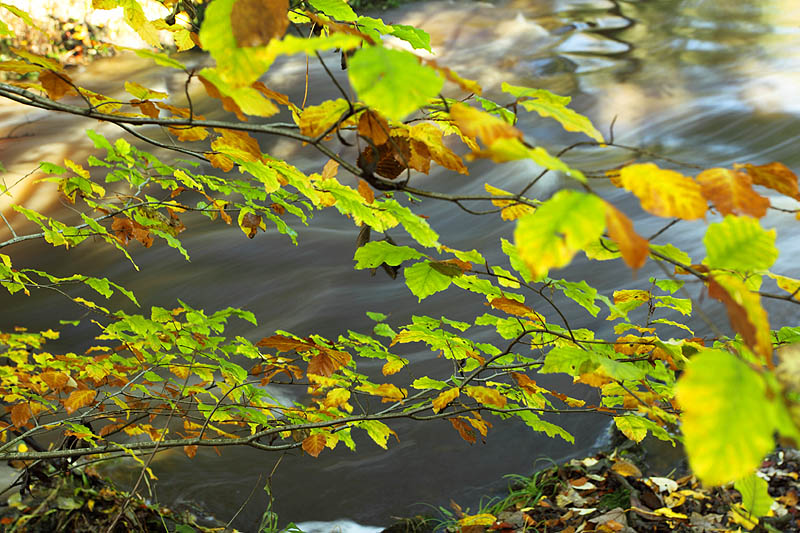
The leaves were barely staying still due to the light breeze so I deliberately used a slower shutter speed to create movement and much more abstract image of autumn colour.
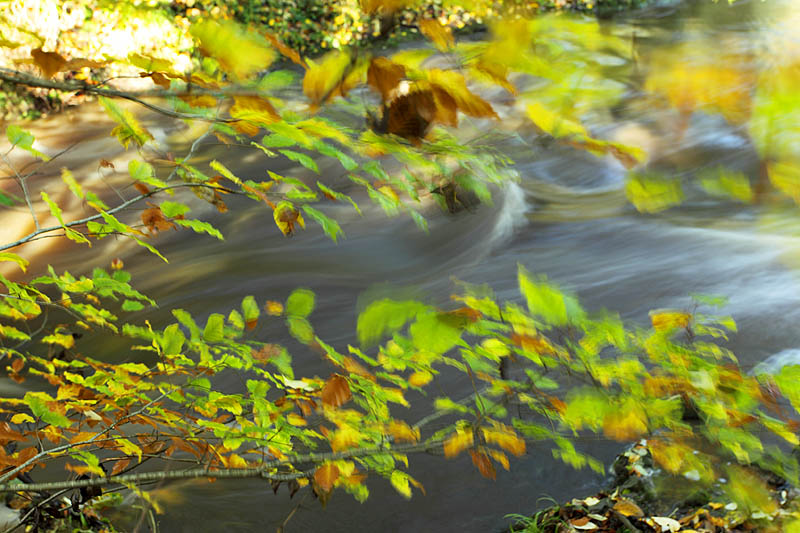
Another abstract but this time allowing the scum on the water to record as streaks whilst the autumn trees remained still.
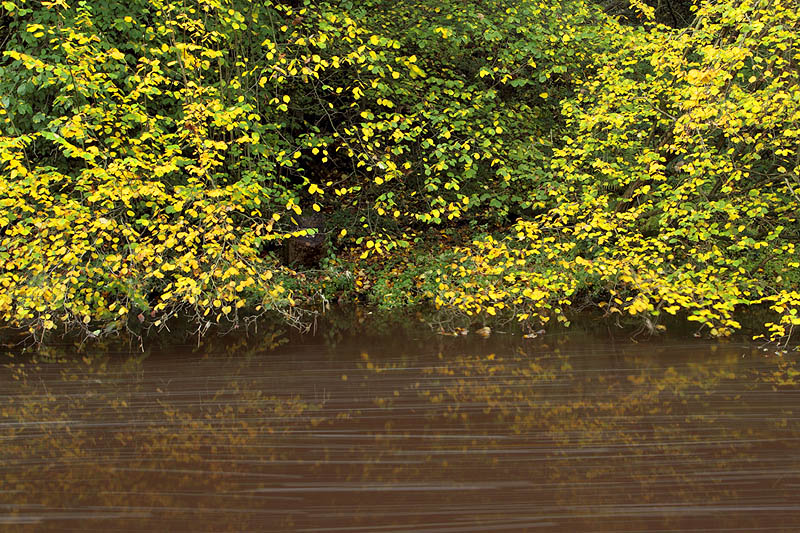
My last shots of the day were of the weir surrounded by autumn colour. By this point the light was failing and it was becoming too dull for good rendition of the colours.
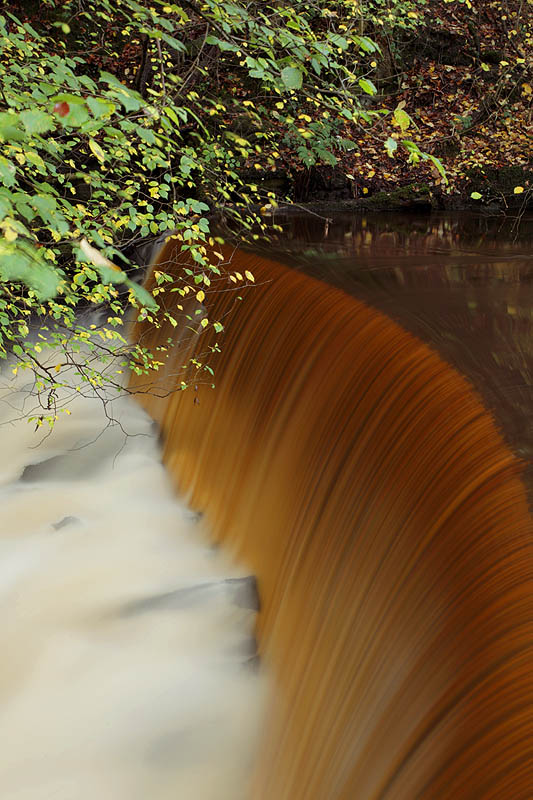
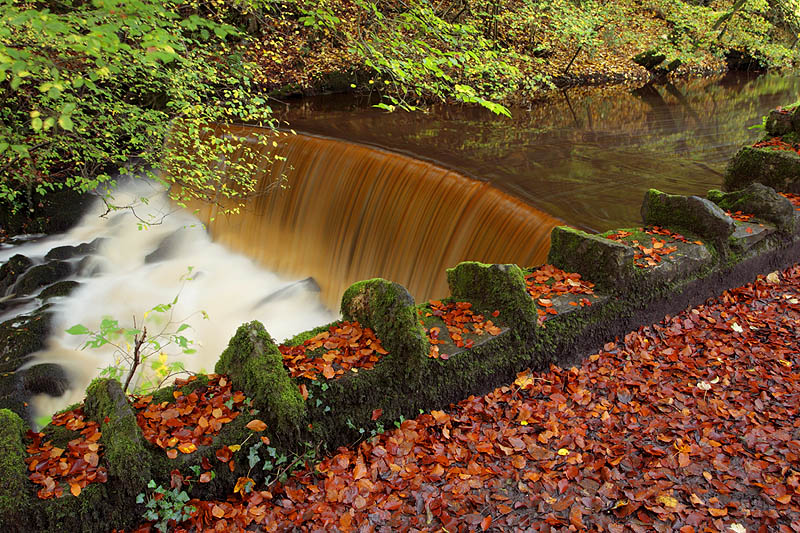
This woodland is a truly stunning location for autumn colours and I’ll be adding it to my list of Photography Workshops for 2016. More courses can be viewed at Nature Photography Courses


